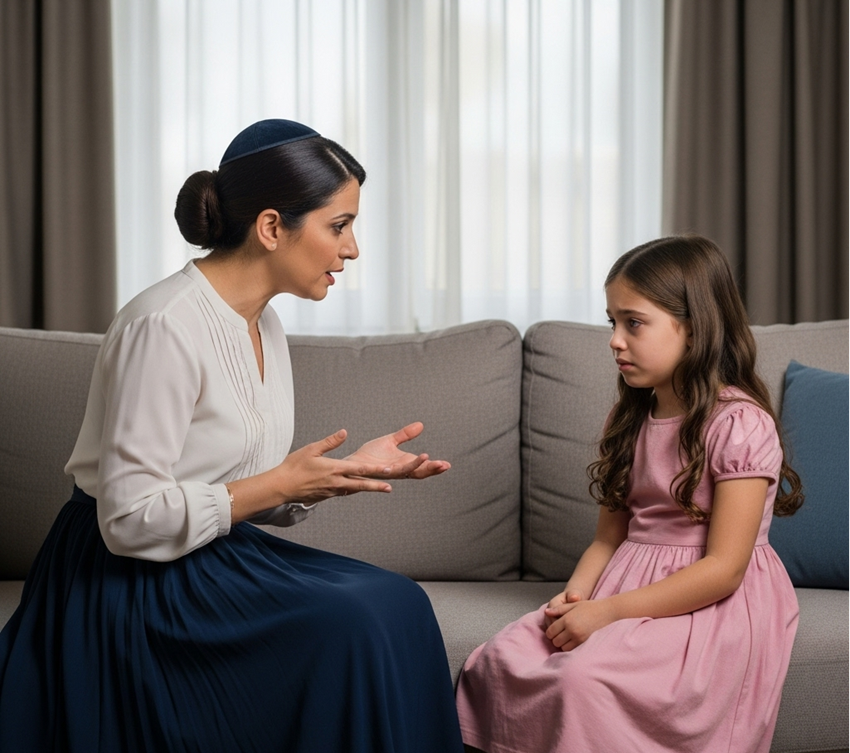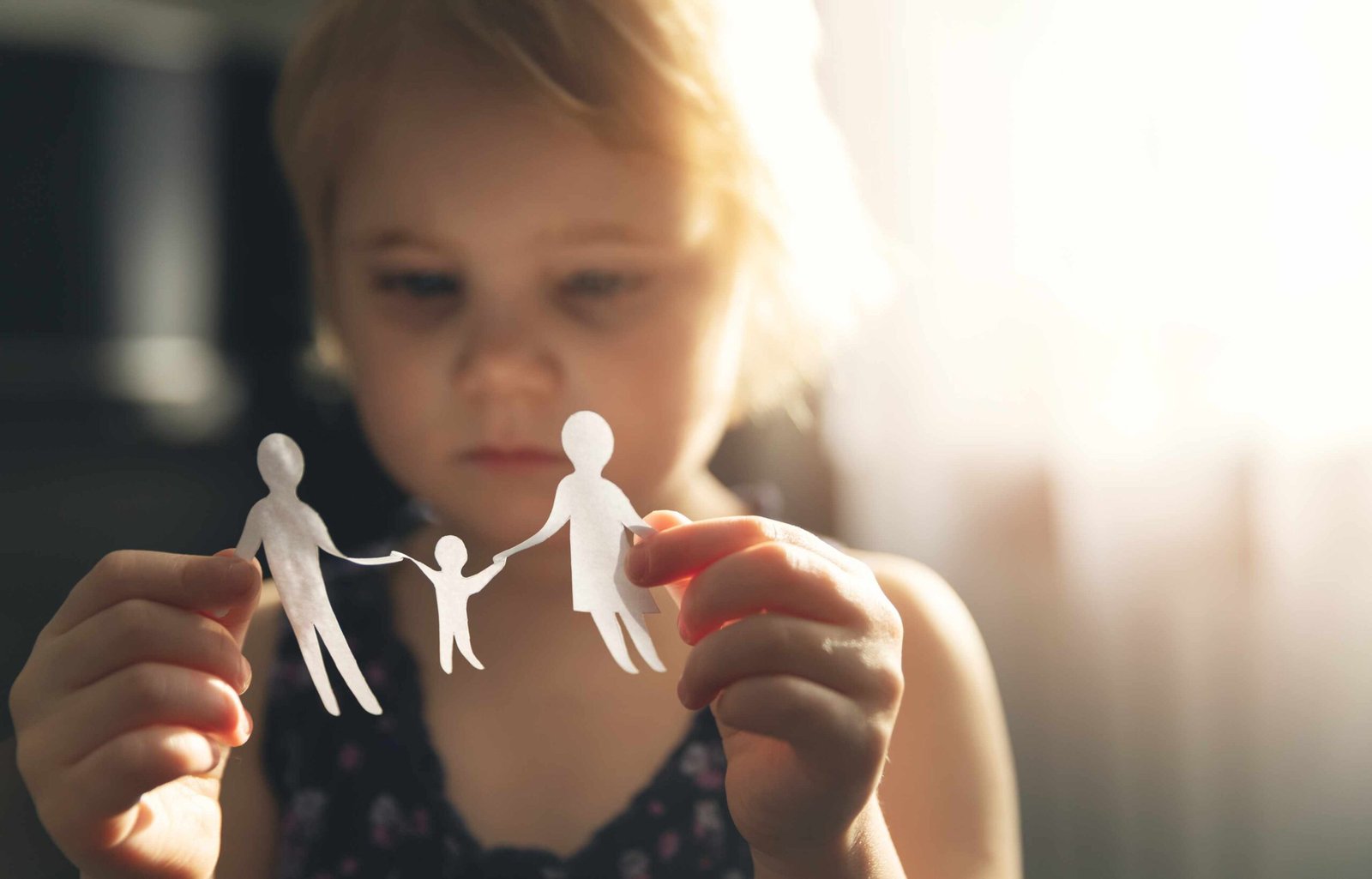As a Toenet Rabbanit in the Rabbinical Courts and a mediator for separating families, I witness daily the painful erosion of parent-child bonds—an erosion too often ignored, misunderstood, or dismissed. Judge (Ret.) Philip Marcus, in his June 15, 2026, presentation sponsored by HeartLinks, gave a powerful voice to this crisis.
His presentation, titled “Alienating Behaviours Are Child Psychological Maltreatment: Prevention and Treatment,” resounded with urgency and truth.
Judge Marcus, a veteran of the family court bench in Jerusalem and a leading authority on child welfare, framed Parental Alienation not as a mere symptom of high-conflict divorce, but as a form of emotional abuse with profound and lasting effects on children.
This is not a behavioral issue. Alienation during divorce is not merely a personal crisis. It is a public health issue, a psychological emergency, and a moral failure in how children are protected during family separation.
Erasing a parent forces the child into conflict. Split loyalty quietly fractures their inner world for years.
That is why prevention is not enough. Efforts to avoid alienation must evolve into an active, systematic defence against it. Family systems, legal frameworks, educators, and therapists must recognise its danger and treat it as a priority.
What begins as a private dispute can escalate into a form of psychological warfare. The cost is paid in a child’s trust, mental health, and lifelong relationship patterns.
Neutrality is not protection. Silence is not safety.
This is a call to act, consistently, intelligently, and without delay.
Understanding the Roots: What is Parental Alienation?
Judge Marcus carefully distinguishes between the controversial label of “Parental Alienation Syndrome” and the more precise, legally serviceable concept of “Parental Alienating Behaviours” (PABs).
PABs encompass a range of actions or omissions by one parent that systematically erode the child’s bond with the other parent. These include:
- Criticizing the other parent where the child can hear
- Leaving the other parent out of essential moments or school events
- Allowing or encouraging the child to disrespect or reject the other parent
- Using schedules, holidays, or religion to push one parent aside is a form of control.
Even when done subtly or without intent, the damage to the child is no less real. In the words of Judge Marcus:
“Children do not have the psychological architecture to resist manipulation by the parent they depend on.”
The real harm often hides behind words that sound noble. A parent says, “I’m protecting my child,” or “They deserve the truth.” But sharing adult anger under the guise of truth is not protection; it is harm. Making a child carry one parent’s bitterness strips away their innocence.
Like the mother who says, “Your father left because he doesn’t care.” That is not true. That is a wound. Or a father who routinely fails to bring the child to handovers, then says, “Mom didn’t want to see you today.” In both cases, the child internalizes rejection, distrust, and anxiety, not about the alienated parent, but about themselves.
Let’s say it’s true that a father left because he doesn’t care. A child (and most adults) is not mature enough to separate the behavior of an unhealthy parent from their self-perception.
Alienating Behaviors: Psychological Child Maltreatment
In a forthcoming 2025 publication co-authored with psychologist Irit Kivenson Bar-On, Judge Marcus presents overwhelming evidence that PABs amount to psychological child maltreatment. The symptoms in alienated children often include:
- Distorted thinking, poor reality testing
- Emotional constriction or pseudo-maturity
- Gender identity confusion
- Unwarranted fear, aggression, or rejection of the alienated parent
A 2022 umbrella study covering over 11 million participants found that emotional maltreatment has consequences equal to, or greater than, physical and sexual abuse.
This reality is not only academically disturbing; it is morally devastating. We would never allow a parent to strike a child. But we do, time and again, permit emotional blows so devastating that children grow into adults scarred by distorted relationships, mistrust of authority, and difficulties in intimacy. And of course, the alienating parent is charged with self-righteousness and delusions of “protecting” their child.
As a mediator and toenet rabbanit, I have seen children become tools in their parents’ unresolved trauma. And the tools used? Words, Withholding, Silence, Poisoned loyalty, false moral outrage, the alienating parent has an arsenal of nuclear emotional weapons.
Why It Happens: The Unseen Web
Judge Marcus reminds us that not every case of contact refusal is alienation. Some parents have genuine histories of abuse. Some struggle with untreated mental illness. Teens may withdraw as part of normal development.
But where a parent deliberately turns the child away from the other, or fails to protect the relationship, alienation takes root. This can take many forms:
- Framing the alienated parent as dangerous or incompetent
- Indulging the child’s hostility instead of challenging it
- Withholding information about school or health matters
- Invalidating the other parent’s role in front of the child
One mother told me, “I only roll my eyes when he calls.” But children read those eye rolls. They feel the withdrawal. Alienation is not just what we say—it’s how we say it, what we fail to say, and what we model.
Prevention: Building the Fence Before the Fall
“Why pull drowning children out,” asks Judge Marcus, “when we could build a fence to stop the fall?”
This fence is Primary Prevention, and it begins long before court. It includes:
Prenups – This is the essential. More than what is written in the prenup, the process of having difficult decisions about triggering topics is an excellent indication of maturity, responsibility and accountability. Most couples find the idea of talking about divorce “unromantic”.
This might be true, but if you are truly seeking to find a suitable partner:
1. You need to be a suitable partner and
2. You need to explore if you and your partner can have difficult conversations and be able to find solutions together , taking into account each other’s needs.
Being able to disagree and find common ground is a great litmus test for compatibility. Avoiding difficult conversations and confrontation. I can not stress this point enough. More than what is written in the prenup is the process of problem solving together, perhaps the most important dimension of a strong marriage.
Premarital Counseling – Conflict resolution, emotional regulation, and parenting philosophies should be standard curriculum.
Religious and Cultural Leaders – Rabbis, rebbetzins, teachers—all must speak clearly that parental alienation is a sin against the child.
Synagogue and School Leadership – Too often, principals and rabbis avoid involvement, fearing they’ll be seen as taking sides. But silence is complicity. When a parent is being alienated, our community must extend inclusion, not distance. Teacher need to include both parents,
We must create literature, host workshops, distribute guidelines for families in crisis. Every parent should know: your ex is not your enemy. Your child is not your ally. And your grief must never be your child’s burden.
Identification and Intervention: Every Day Counts
Secondary Prevention means catching the signs early:
- A child who mimics adult accusations
- Sudden rejection of one parent without cause
- Splitting behavior: one parent “all good,” the other “all bad”
Professionals need tools:
- Schools must train teachers to spot emotional abuse
- Doctors and Nurses should include parenting dynamic questions in intake
- Therapists must be trained to distinguish alienation from justified distance
- Courts must refer high-conflict cases to trained family evaluators immediately
- Rabbi and Therapists must first speak with the other parent before giving any a “psak” instruction that they should or could cut off from a parent.
I am working to build a screening protocol at intake for legal professionals. This is most complicated as the parents are usually in the height of conflict, emotionally overwhelmed and not nesseccarily able to put their emotions aside and unbiasedly put their children’s needs first.
Alienation rarely happens overnight. It is slow, methodical, like Chinese water torture. And then suddenly, the dam breaks: “I hate him. I never want to see him again.”
Tertiary Response: When Court Is the Only Option
When prevention fails, courts become necessary. But Judge Marcus cautions: most judges are not trained psychologists. Without deep understanding of child attachment and trauma, courts may unintentionally reward alienating behavior.
Common errors include:
- Believing the child’s wishes without evaluating influence
- Allowing alienating parents to control access
- Avoiding enforcement to “avoid more conflict”
- Not understanding that children will often “side” with the abusive parent against the healthier parent.
However, no contact is the highest level of conflict. Prolonged absence erodes any remaining bond. The court must:
- Move swiftly
- Sanction noncompliance
- Order therapeutic intervention
Family courts and Rabbinical Batei Din must be educated about the psychology of alienation. Courts often hesitate to limit an alienating parent’s time, fearing backlash. But unchecked manipulation masked as “shared parenting” can erode a child’s emotional foundation.
The Alternative: Healing Without the Gavel
Before court, we have better tools:
- Collaborative Divorce: Where both parties commit to fairness
- Mediation with Trauma-Informed Professionals: Where the goal is healing, not winning
- Conciliation through Shared Narrative: Where the child’s story matters most
But these methods require screening. Not every family is ready. Personality disorders, domestic abuse, and unresolved trauma can hijack the process. Some parents will use these methods to heap even more abuse onto the other parent.
In my mediation practice, I’ve seen both: The miraculous transformation of parents who chose peace, and the devastation wrought by untreated narcissism, borderline behaviors, and vindictive patterns.
My Plea: A Personal Reflection
This issue is not theoretical to me.
A father sits with tears, asking why his daughter stays silent.
Her son turns on her with harsh words, forgetting she once sat by his hospital bed.
A child whispers, “I love Mommy… but Daddy must not know.” He says she doesn’t really love me.”
It is the child who says to his father, “You can’t come to my wedding, because if you come Mommy won’t .”
This is a moral crisis.
And to every parent, I say:
Do not make your child your weapon.
Do not make your pain your child’s inheritance.
A Communal Call: What We Must Do
Judge Marcus challenges us all:
- Inform: Highlight survivor stories through public awareness efforts.
- Equip: Provide continuous education for lawyers, judges, rabbis, and mental health professionals.
- Support: Allocate resources to early intervention and post-divorce recovery programs.
- Protect: Make it unethical for legal professionals to support alienation knowingly.
- Support: Build a communal safety net for alienated parents, including peer groups and mental health resources.
Conclusion: Every Child Deserves Both Parents
How tragic when a child feels lonely inside their own family—not because of death or distance, but because they have been taught to hate.
Let us end this.
Let us build systems that see, that intervene, that restore.
Let us honor the sacred right of a child to love both parents—freely, fully, and without fear.
For consultations, speaking engagements, or mediation inquiries:
Toenet Rabbanit Shoshana Goldstein-Nissenbaum, founder of Oseh Shalom Family Mediation
Email: sgn@toenet.com Tel: 054-798-5733For Judge Philip Marcus’ publications and professional trainings:
Email: philipmarcusjurist@gmail.com










